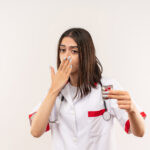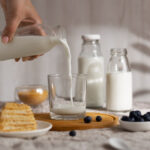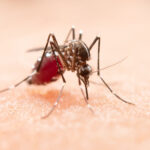
You can’t completely “child-proof” your home, but you can significantly reduce the risk of injuries with some changes and constant supervision. Emergency medical treatment for young children isn’t the same as for adults, so parents and caregivers should have current training in pediatric first aid and plan to do a CPR refresher course annually.
Preventing Drowning
Drowning is a leading cause of unintentional injury death for children under five. One- and two-year-olds are most at risk due to their mobility and developing motor skills. Swimming pools, baths, and natural water bodies are common drowning locations. For every Victorian toddler who drowns, ten non-fatal drowning incidents require hospital treatment. All Australian pools deeper than 30 cm must be fenced by law, including portable or toddler pools.
Safety Measures to Prevent Drowning:
- Supervision: Never leave your child alone in the bath. Actively supervise children around water, keeping them in constant visual contact and within arm’s reach.
- Preparedness: Be ready with everything needed for bathing your child before entering the bathroom. Empty water from baths, buckets, and wading pools immediately after use.
- Safety Barriers: Ensure pools and spas have legal barriers and gates are kept closed. Remove objects that could be used to climb over barriers.
- Public Pools: Watch your children at public pools, keeping those under five within arm’s reach. Lifeguards are not babysitters.
- Teaching and Equipment: Teach your child to swim and ensure resuscitation charts are available by the phone and in pool or spa areas. Use appropriate rigid mesh over fishponds and aquariums.
Preventing Falls
Falling is the most common cause of injury for children. The severity of an injury depends on the height of the fall, the surface landed on, and what the child hits. Minimize fall injuries by assessing the environment from your child’s level.
Safety Suggestions to Prevent Falls:
- Remove Hazards: Clear play areas by removing tripping hazards like toys, rugs, and cords. Pad sharp corners or remove dangerous furniture from play areas.
- Supervision and Equipment: Never carry your baby in a bouncinette or rocker chair on a high surface. Use a change table with raised sides and ends, and never leave a baby unsupervised.
- Harnesses and Gates: Always use a full-body safety harness in prams, strollers, high chairs, and shopping trolleys. Install safety gates at the top and bottom of stairs.
- Bathroom and Outdoor Safety: Use non-skid mats in baths and showers, and ensure swings and slides have soft fall materials underneath. Only use bunk beds for children over nine years.
Window Safety:
- Furniture Placement: Keep furniture away from windows. Install window locks and guards to prevent children from falling out.
Preventing Burns
Homes must have working smoke alarms, with batteries changed yearly and alarms tested monthly. Replace smoke alarms every ten years. Keep children away from fires, flames, hot surfaces, and hot liquids.
Safety Suggestions to Prevent Burns:
- Install Guards and Store Safely: Install fixed guards around heaters and stoves. Lock away matches, lighters, and flammable liquids. Keep a fire blanket and extinguisher in the kitchen and know how to use them.
- Nightwear and Fire Plans: Choose close-fitting nightwear for children. Prepare a home fire escape plan and practice it with your family.
If Clothing Catches Fire:

- Teach your child to stop, drop, cover their face, and roll to extinguish the fire.
In Case of Burns or Scalds:
- Cool the injured area under running water for at least 20 minutes and seek medical attention for severe burns.
Preventing Poisoning
Children under five, especially those between one and three years old, are most at risk of poisoning from household products and medicines. At least two children in Victoria are treated daily for poisoning.
Safety Suggestions to Prevent Poisoning:
- Storage: Keep medicines and household products out of sight and reach of children, ideally in cabinets with child-resistant locks.
- Proper Use and Disposal: Only remove medicines from packaging when needed and store them in original containers. Dispose of unwanted medicines properly and clean out medicine cabinets regularly.
- Education: Teach children that medicines are not lollies and avoid taking medicines in front of them.
Preventing Scalds
Hot liquids cause most burns in young children, leading to serious injuries and long-term treatment.
Safety Suggestions to Prevent Scalds:
- Kitchen Safety: Keep play areas away from the kitchen. Keep hot drinks and foods out of reach, and avoid using tablecloths that children can pull. Use non-slip placemats and turn pot handles inward.
- Bath Safety: Run cold water first when filling the bath and limit hot water delivery temperature to 50°C. Install a stove guard around hotplates.
Microwave Safety:
- Proper Use: Keep microwaves out of children’s reach. Carefully heat and test the temperature of baby bottles before feeding.
Preventing Choking
Safety Suggestions to Prevent Choking:
- Food Safety: Avoid giving children foods they can choke on and ensure they sit calmly while eating.
- Household Items: Keep small objects like pen tops, hair ties, batteries, and coins out of reach. Regularly check toys for small parts.
Button Batteries:
- Identify items with button batteries, secure battery compartments, keep batteries out of reach, and dispose of them safely. If swallowed, call the Poisons Information Centre immediately.
Blinds and Curtain Cords
Loose cords can strangle children. Go through each room to check and secure any loose or looped cords with cleats or tension devices.
Safety Suggestions:
- Furniture Placement: Keep cots, beds, and playpens away from windows with cords. Secure loose cords and supervise children in rooms with accessible cords
By implementing these safety measures, you can create a safer environment for your child, reducing the risk of injuries and emergencies.
A Quick Review
Child safety is paramount, with drowning, falls, burns, poisoning, and choking being the most common injury risks. Supervision and home modifications can significantly reduce these risks. Key measures include installing safety barriers, using harnesses, securing hazardous items, and educating children about safety. Emergency preparedness, like knowing first aid and having emergency numbers handy, is essential for quick response in case of accidents.











